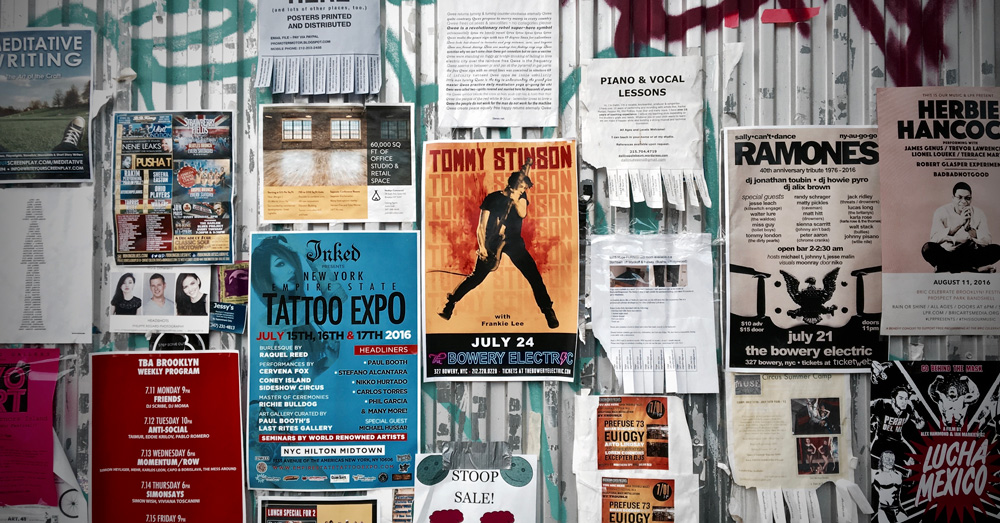Designing Sponsorship Packages and Tips For Getting Event Sponsors
Organizing an event can be expensive, and one of the best ways to reduce costs is to secure sponsors. Sponsors not only provide financial support but also help to promote the event, increase its visibility, and attract more attendees. In this article, we'll explore some effective ways to get sponsors for events and provide sponsorship package examples you can offer as an incentive.
1. Start with a sponsorship proposal
Before you can secure sponsors for your event, you need to create a sponsorship proposal. This document should include information about your event, your target audience, and the benefits of sponsorship. It should also include information about the various sponsorship packages you offer and the associated costs.
Different ways to reach out to sponsors could include:
- Direct mail
- Calls
- Networking events
- In-person/arranged meetings
- Social media
2. Use your network
One of the most effective ways to get sponsors for your event is to use your network. Reach out to people you know who may be interested in sponsoring your events, such as colleagues, friends, or business partners. You can also reach out to local businesses and ask if they would be interested in sponsoring your event as well.
Remember to demonstrate the ways a sponsorship could be beneficial to them:
- Brand awareness and visibility
- Extended reach to your current audience or a new one
- Introduction to your community
- Can be part of your content strategy
- Builds community and business relations
3. Leverage social media
Social media can be a powerful tool for securing sponsors.
Use your event's social media accounts to promote your sponsorship packages and attract potential sponsors. You can also use social media to reach out to businesses and individuals who may be interested in sponsoring your event.
4. Offer unique sponsorship packages
One way to attract sponsors is to offer unique sponsorship packages. Sponsorship package examples could include offering a VIP package that includes premium seating, access to a private reception, and other perks. You could also offer sponsorship packages that include opportunities for brand exposure, such as signage, branding on event materials, or mentions in event press releases.
Keep reading for more tips and examples on creating these packages.
5. Consider in-kind sponsors
In-kind sponsors provide goods or services instead of financial support.
For example, a catering company may provide food for your event in exchange for brand exposure. In-kind sponsors can be a great way to reduce costs and offer unique experiences to your attendees. Definitely, something to consider!
6. Develop relationships with sponsors
Building relationships with sponsors is important for securing their support and ensuring a successful event. Make sure to communicate regularly with your sponsors and provide regular updates on your event's progress. You should also provide sponsors with opportunities to network with attendees and showcase their brand.
Examples of Sponsorship Packages
Here are some examples of sponsorship packages you can offer as an incentive to potential sponsors:
-
Title Sponsorship: This is the highest level of sponsorship and offers exclusive rights to be the title sponsor of the event. The sponsor's logo and name will be prominently displayed throughout the event, and they may have the opportunity to participate in the opening and closing ceremonies.
-
Presenting Sponsorship: This sponsorship offers the opportunity for the sponsor to present a specific segment of the event, such as a keynote speech or a product demonstration. The sponsor's logo and name will be featured prominently during their presentation.
-
Platinum Sponsorship: This sponsorship offers premium branding opportunities, including logo placement on all marketing materials and signage throughout the event, as well as recognition in all press releases and media coverage.
-
Gold Sponsorship: This sponsorship provides branding opportunities through logo placement on event marketing materials, signage, and the event website. Sponsors may also have the opportunity to provide branded merchandise or samples to event attendees.
-
Silver Sponsorship: This sponsorship offers branding opportunities through logo placement on event signage, recognition on the event website, and the opportunity to provide branded merchandise or samples to event attendees.
-
Booth Sponsorship: This sponsorship provides the sponsor with a designated booth or space at the event to showcase their products or services. The sponsor's logo will be prominently displayed on the booth or space.
-
VIP Sponsorship: This sponsorship offers exclusive access to VIP areas and experiences, such as a private lounge or backstage access. Sponsors will receive recognition on event marketing materials and signage in the VIP area.
-
Media Sponsorship: This sponsorship offers branding opportunities through recognition in all media coverage and press releases leading up to and following the event. The sponsor's logo and name will be prominently featured in all event-related media.
-
Community Sponsorship: This sponsorship offers opportunities for local businesses or organizations to support the event and gain recognition within the community. Sponsorship benefits may include logo placement on event marketing materials and recognition in local media coverage.
Conclusion
Securing sponsors for your event is an important part of its success. By using your network, leveraging social media, offering unique sponsorship packages, and developing relationships with sponsors, you can attract sponsors who will provide financial support, increase visibility, and attract more attendees.






